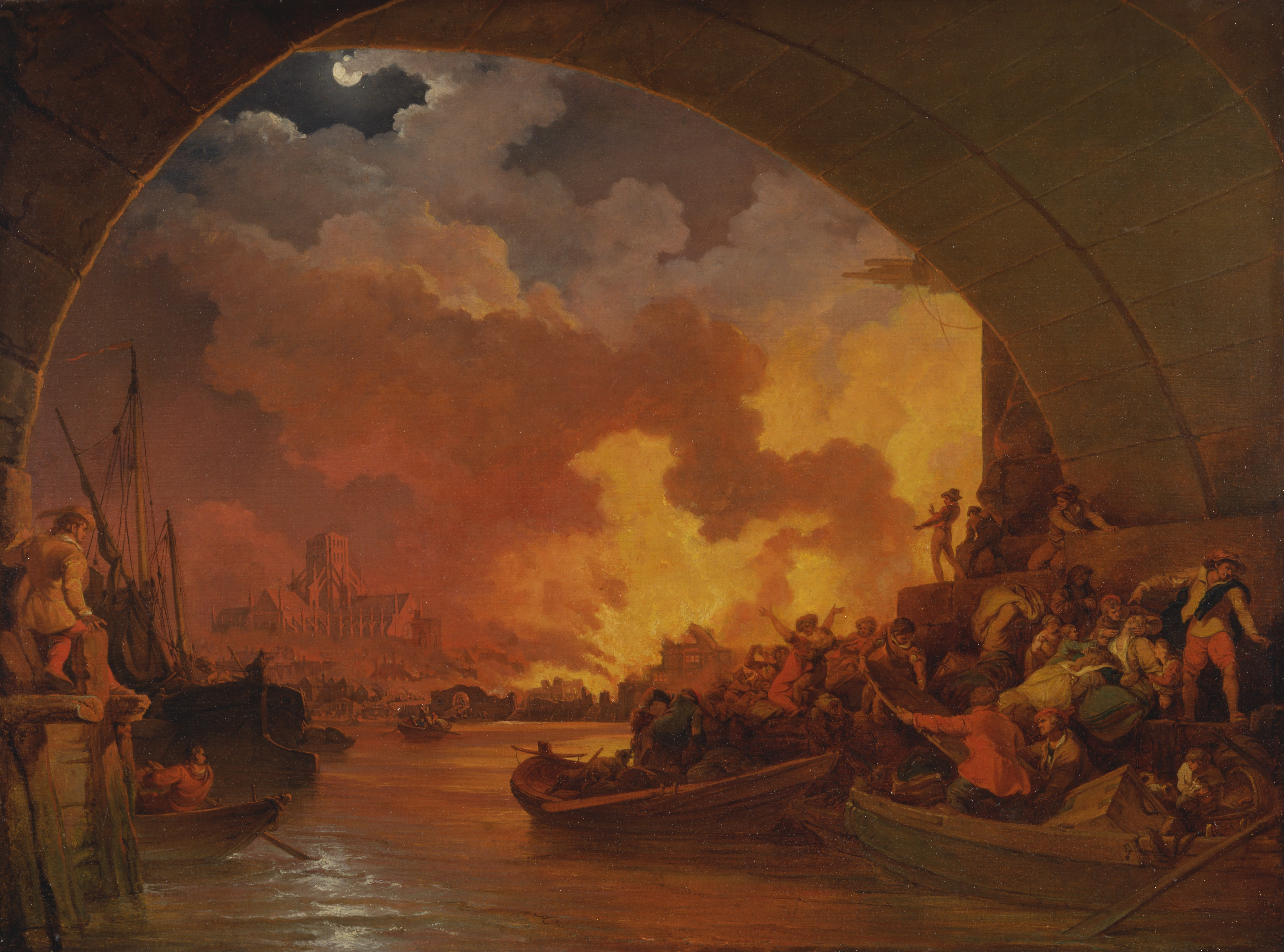In the small hours of Sunday 2 September 1666, Samuel Pepys, Secretary to the Navy, was roused from his bed with news of a fire burning several streets away. He went to a window of his house close by London’s east wall and looked out over the city. There was, indeed, a conflagration over towards Billingsgate, but these outbreaks were quite common in the narrow streets and timber-framed houses of the capital. Pepys decided that there was nothing to worry about and returned to bed. He needed his sleep. He – and England – had enough problems to worry about without a little fire in overcrowded London city.
After all, the nation was divided and discontented and the existing government was highly unpopular. More than six years had passed since the return of Charles II from exile in Europe and the restoration of the monarchy after the republican rule of Oliver Cromwell. The myth of England being delivered from gloomy, oppressive Puritan rule by the ‘Merry Monarch’ is well ensconced in popular perception but it is a myth. It did not take long for the mood of the capital and the country to change as the policies of the new government were implemented.
If a week is a long time in politics, six years may seem like an eternity. Throughout the country people had seen royalist landowners settling scores with neighbours and tenants who had sided with the parliamentarians in the Civil War. The bishops, now installed or re-installed in their dioceses, rigorously enforced the new religious settlement and, as a result, 2,000 clergy who could not accept the ‘high church’ doctrines and ceremonies of the new regime were turfed out of office. Charles, who had learned his politics the hard way, was not totally behind the policies of the Restoration Parliament. He knew the importance of toleration. The French, among whom he spent most of his adult life, had a saying: ‘ne reveillez pas le chien qui dort’ – ‘don’t rouse the sleeping dog’ – and it expressed a philosophy close to Charles’ heart. However, too many of his followers were set on revenge.
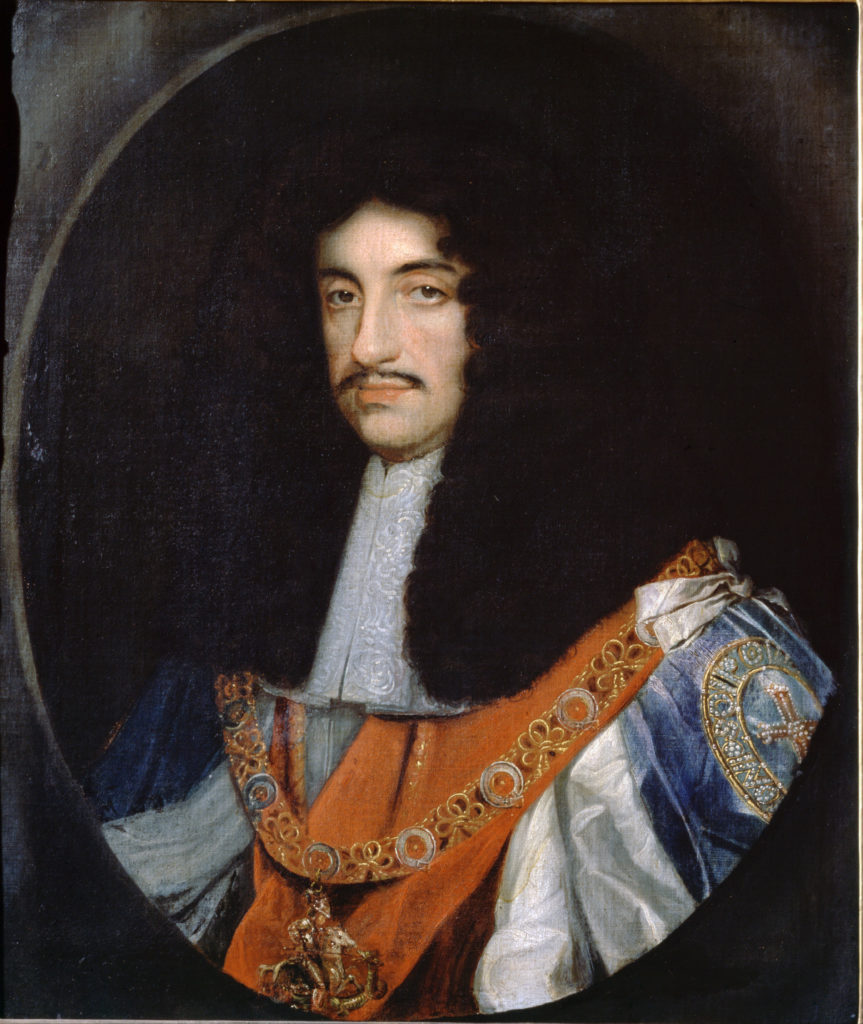
Unsuccessful foreign policy added to the people’s disillusion. Early in 1665 Charles’ advisers prodded him into a declaration of war against England’s mercantile rivals, the Dutch. In the previous decade Cromwell had engaged in the First Anglo-Dutch War (1652-4). His navy had emerged triumphant. The profits were high. National prestige soared. Royal councillors urged that a repeat performance would be good for public morale, re-awaken the regime’s popularity, and pour much-needed cash into government coffers. The reality was – to say the least – disappointing. England’s navy was humiliated and the losses in ships and men were horrendous. Charles’ subjects were often heard comparing him unfavourably with Oliver Cromwell.
Charles’ behaviour was doing little to restore public confidence. The king, who had ascended the throne in 1660, was 30 years old and had spent all his adult life as a refugee sponging on the generosity of foreign rulers. During his exile he had cultivated the arts of survival – charm, duplicity, pragmatism and braggadocio. He was a royal con-man who used secret diplomacy, false promises and bribery to deceive foreign powers, parliament, his own ministers and his people, with one major objective always in view – never to go on his travels again. In his not-so-private life King Charles II was fun-loving and extremely self-indulgent.
But the political inadequacies of the government, and the scant respect commanded by the king, paled into insignificance beside the next woe to fall upon the nation. June 1665 proved to be unbearably hot. It encouraged the growth and spread of viruses bearing disease and they thrived, particularly wherever people lived together in cramped and unhygienic conditions. By the end of the month, 600 deaths from bubonic plague had been registered in London. That was a mere prelude. In September, 30,000 deaths were reported. Before the pestilence had done its worst probably three times that number had perished in London alone.
The horror of the epidemic can scarcely be imagined – bodies tumbled into mass graves; infected households locked in to prevent the spread of contagion. By the end of the year, the plague had run its course but the government had little cause to rejoice. The treasury was empty, the war was going badly and peace negotiations were making no progress. Charles may well have cursed his bad luck. Many preachers attributed the catalogue of disasters to divine punishment of a profane king. But worse was to come.
The fire began that dark Sunday morning in a baker’s oven in Pudding Lane, near London Bridge. Samuel Pepys roused himself at 7am and was still not overly concerned by what he could see from his window. Only when news of the devastation arrived borne by alarmed callers did he walk to the Tower of London to gain a better vantage point.
Now he realised that the emergency might be serious. He took a boat and had himself rowed westwards, under the bridge, which was already burning. Only now did he grasp the extent of the catastrophe. A strong east wind was driving the flames into the heart of the capital. Citizens were swarming the riverbank to get themselves and their possessions into boats. Pepys ordered his boatman to make all speed for Westminster, where he reported to the king. Charles was unaware of the crisis because the bend of the river obscured the view of the city. How would he react?
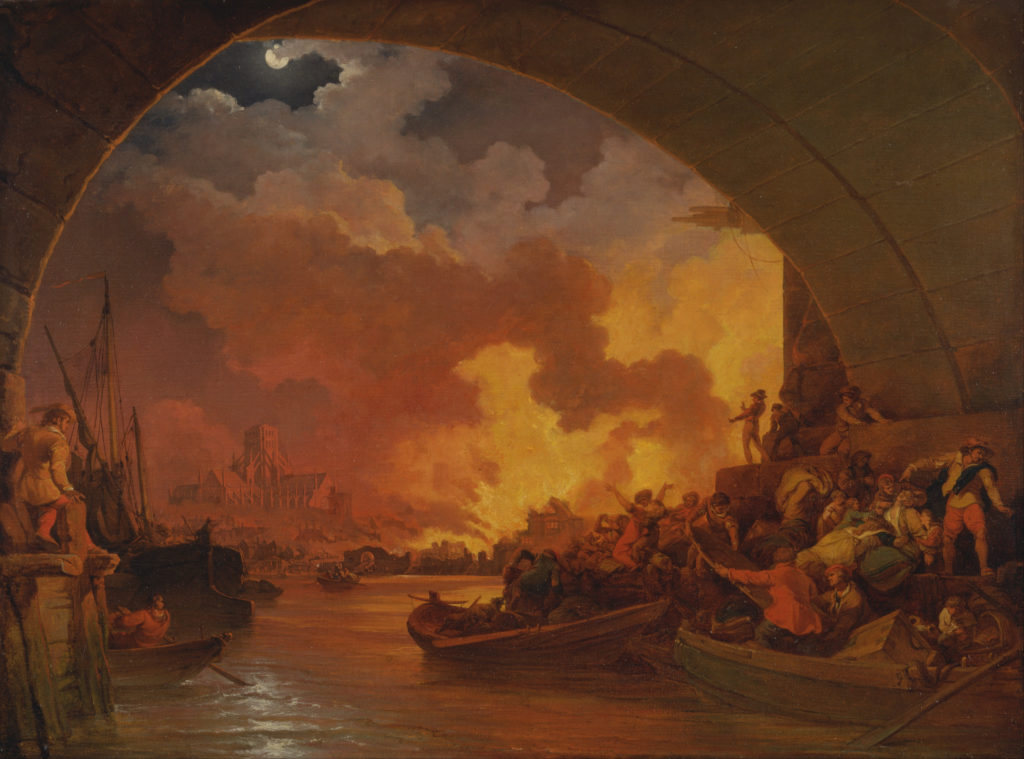
The answer is ‘with alacrity and vigour’. He immediately sent word to the mayor ordering him to pull down buildings in order to impede the spread of the fire and promised troops to help him. In the afternoon, he went downriver to see the disaster for himself. He landed at Queenhythe and talked with the crowd of refugees, gaining detailed information and urging on everyone the need to pull down buildings in the path of the conflagration. He was less than 100 metres from the blaze but appeared careless of the danger in his eagerness to help.
Back at Westminster, he summoned a group of Privy Councillors to draw up a plan of campaign. A committee was appointed with headquarters at Ely House in Holborn, just beyond the western wall of the city. From here groups of soldiers and volunteers were despatched to various points to do whatever was necessary to check the fire’s progress. Charles spent most of Monday in preventing what would have been another tragedy. The strong wind was carrying a rain of sparks towards Westminster and there was a possibility that the palace and all the government offices might be set alight. The king supervised the erecting of fire breaks at Charing Cross and had teams out smothering any embers that reached the western end of Fleet Street.
The first thing Tuesday morning found him and his brother, the duke of York, back in the city. They rode to and fro, urging on the firefighters and sometimes dismounting to join the chains of people passing buckets of water. Charles also carried a pouch of gold guineas to give spontaneous rewards to men conspicuous for their efforts.
Charles was everywhere. For more than 30 hours without a break he rode about the northern parts of the capital, which had so far avoided the flames. He sent word downriver to the dockyard for bread to be brought from the navy stores to feed the homeless and destitute. He gave orders for the relief of the hundreds of citizens gathered in makeshift camps on the spaces of Moorfields and Spitalfields to the north. He instituted the setting up of a relief fund. By the time he returned to Westminster his clothes were wet and muddy and his face black with soot.
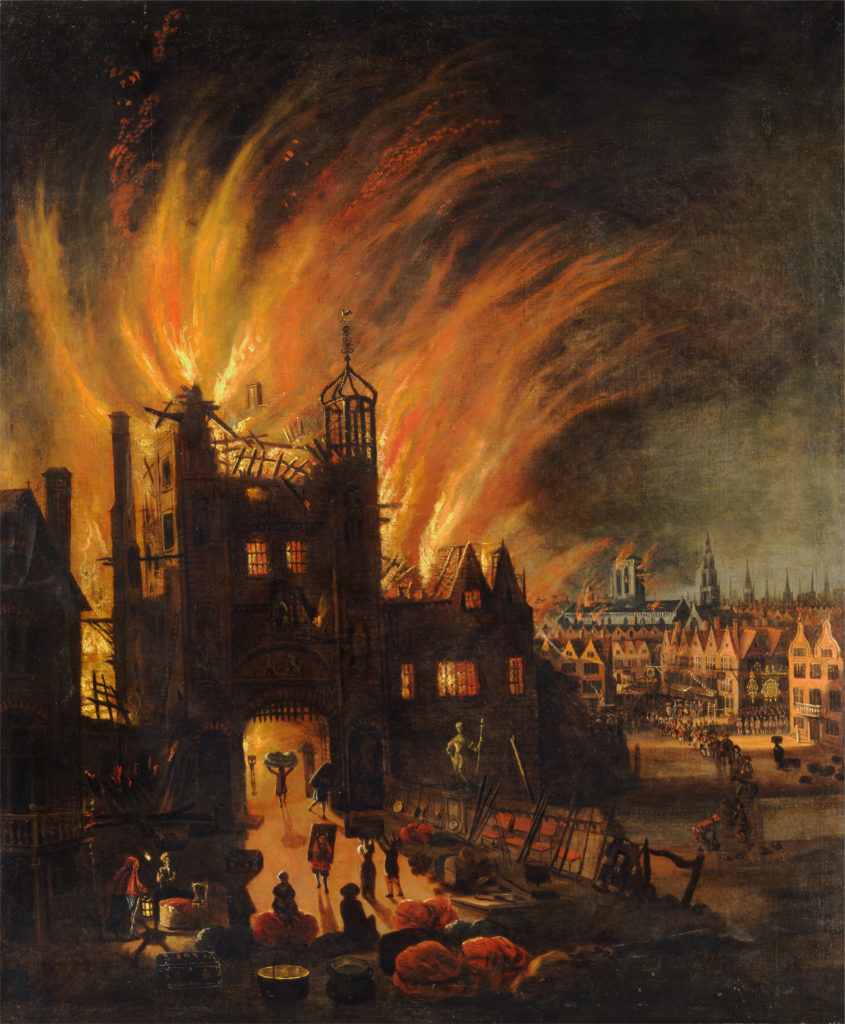
Emergency situations usually bring out both the best and the worst in people and this was certainly the case in September 1666. Kind souls came in from the surrounding country to offer succour to the homeless. Other individuals thought only of themselves. At an early stage of the conflagration, Charles urged the authorities to blow up some of the houses that were yet to be set alight in order to create wider gaps than was possible merely by demolition. Evelyn noted the response with disgust: “Tenacious and avaricious men, aldermen, etc, would not permit, because their houses must have been of the first.”
By Thursday, the wind had finally died down. That and the blowing up of houses with gunpowder which, at long last, had been brought to speed the demolition work, enabled the Great Fire to be brought under control. However, vigilance was still needed as occasional bursts of flame shot up from the smouldering embers. The king now went to the Tower of London and oversaw the destruction of wooden buildings within the fortress. Although the fire had moved in the opposite direction, there was always the possibility of sparks causing a secondary blaze in the vicinity of the arsenal where the main stores of gunpowder were stored. Had they exploded, the devastation would have been unimaginable.
Something else ‘not indeed imaginable’ to Evelyn was, “how extraordinary the vigilance and activity of the king and duke was, ever labouring in person, and being present to command, order, reward and encourage workmen, by which he showed his affection to his people and gained theirs.”
Whether or not any popularity would last would depend on three factors – how Charles tackled the enormous task of reconstructing the razed city, whether he was prepared to put in efforts to improve his public image, and whether his luck would last.
The king certainly applied himself enthusiastically to the immense task of rebuilding the nation’s capital. 383 acres of the city lay in ruins. 13,000 houses, 89 churches (including the cathedral) had been reduced to rubble, along with the halls of the livery companies and other corporate and public buildings. The challenge was mind-blowing – but so was the opportunity.
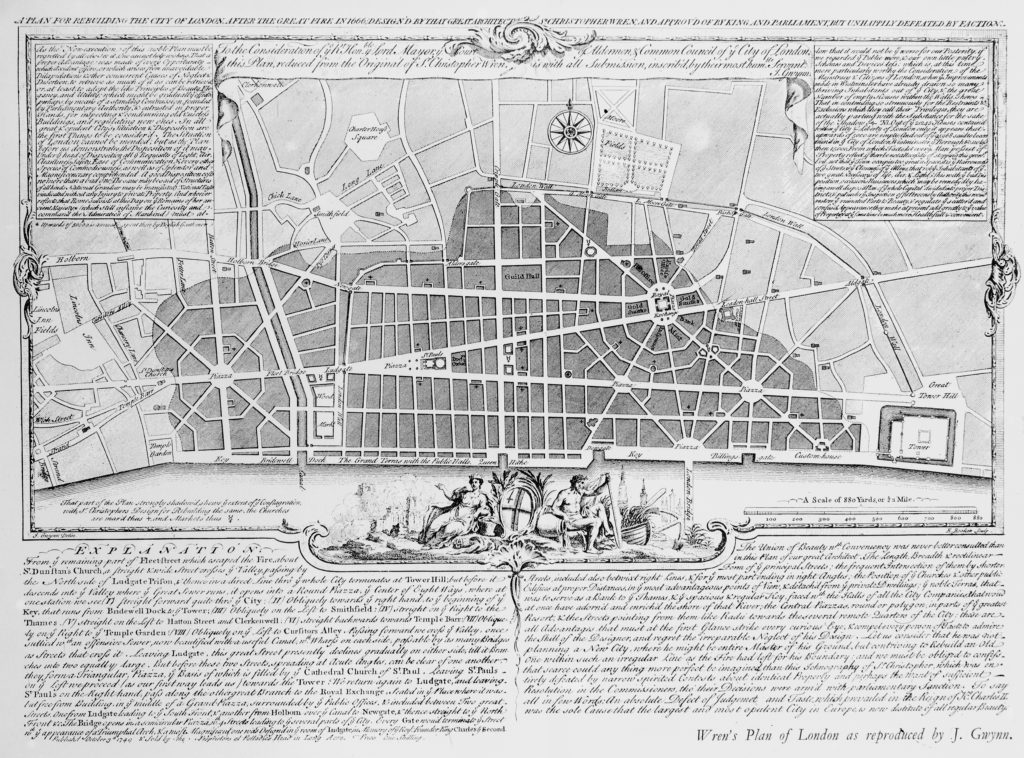
On his travels, Charles had visited and admired some of Europe’s most impressive cities and his imagination was fired by the prospect of ‘phoenix London’ rising from the ashes. He had a genuine interest in architecture and something of a flair for it. Within days a Privy Council committee had been set up to work hand-in-hand with the city fathers. Charles often attended their meetings. His vision for a new city involved a complete rethink: interconnecting straight thoroughfares of houses built of stone and brick. It was not to be. Cost-consciousness and conservative thinking ensured that much of the old shape of London would be retained.
In Sir Christopher Wren, Charles found an architect of genius who shared his aesthetic preferences for the Baroque and Classical revival fashions prevailing on the continent. Wren and his office drew up the plans; the committee pondered them; the king urged them and supported them by issuing proclamations in support of particular projects and priming the financial pump from the government’s slender means. No adventurous, sophisticated new London came into being, but at least the rebuilding got underway quickly. Wren’s churches and, of course, the revolutionary St Paul’s gave hints of what might have been. Londoners knew that their king had done all he could do. In 1674, they acknowledged this by presenting him with the Freedom of the City of London – the only reigning monarch ever to have received this honour.
Derek Wilson is a best-selling historian specialising in the Tudors and Stuarts. For more stories of Europe’s most notorious monarchs, subscribe to History of Royals and get every issue delivered straight to your drawbridge.
Sources:
- A Fraser, King Charles II 1979
- C Jackson, Charles II – The Star King 2016
- E S de Beer (ed.), The Diary of John Evelyn, Oxford 1559
- N Hanson, The Great Fire of London, Hoboken 2001
- R Latham & W Matthews, The Diary of Samuel Pepys 1970-83
